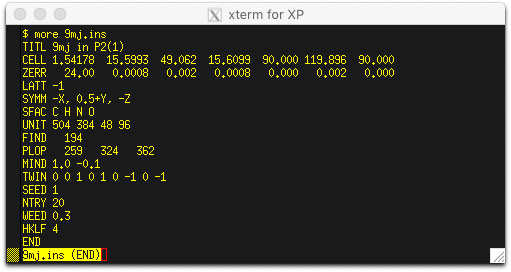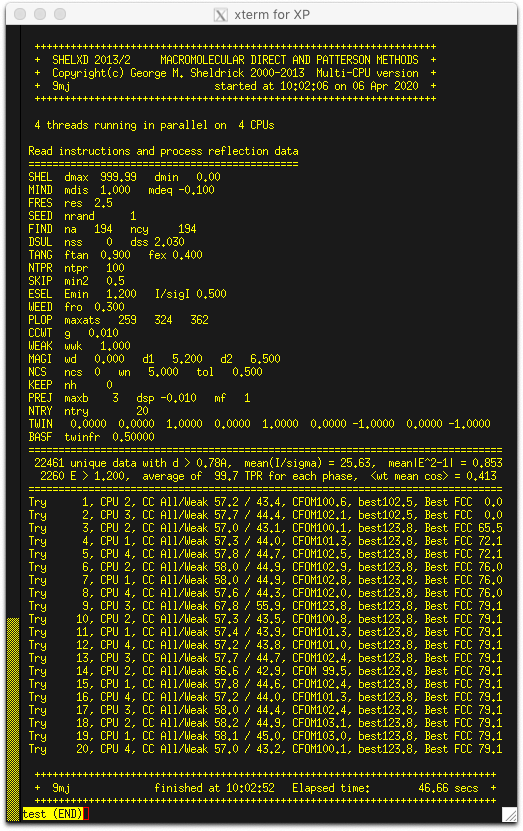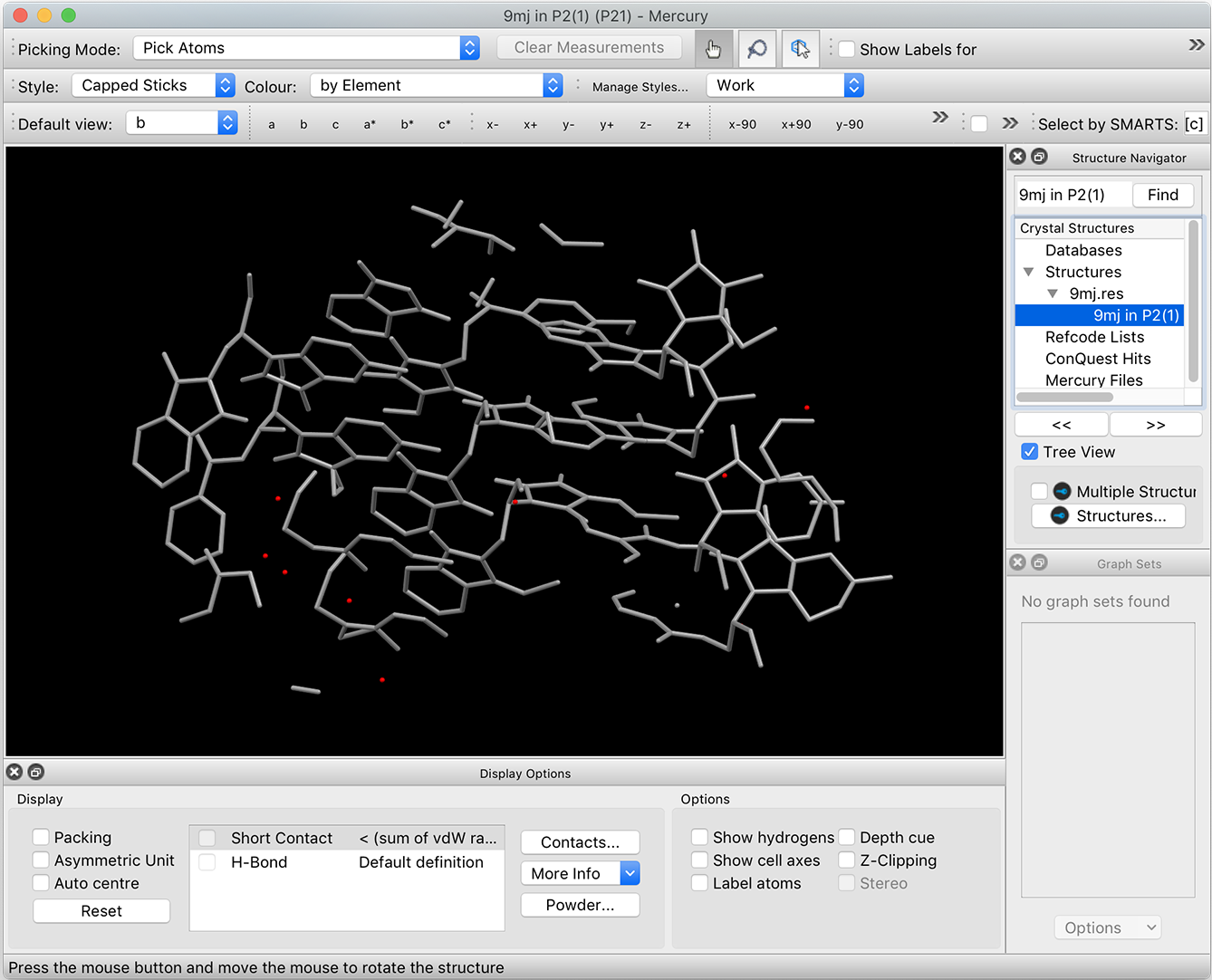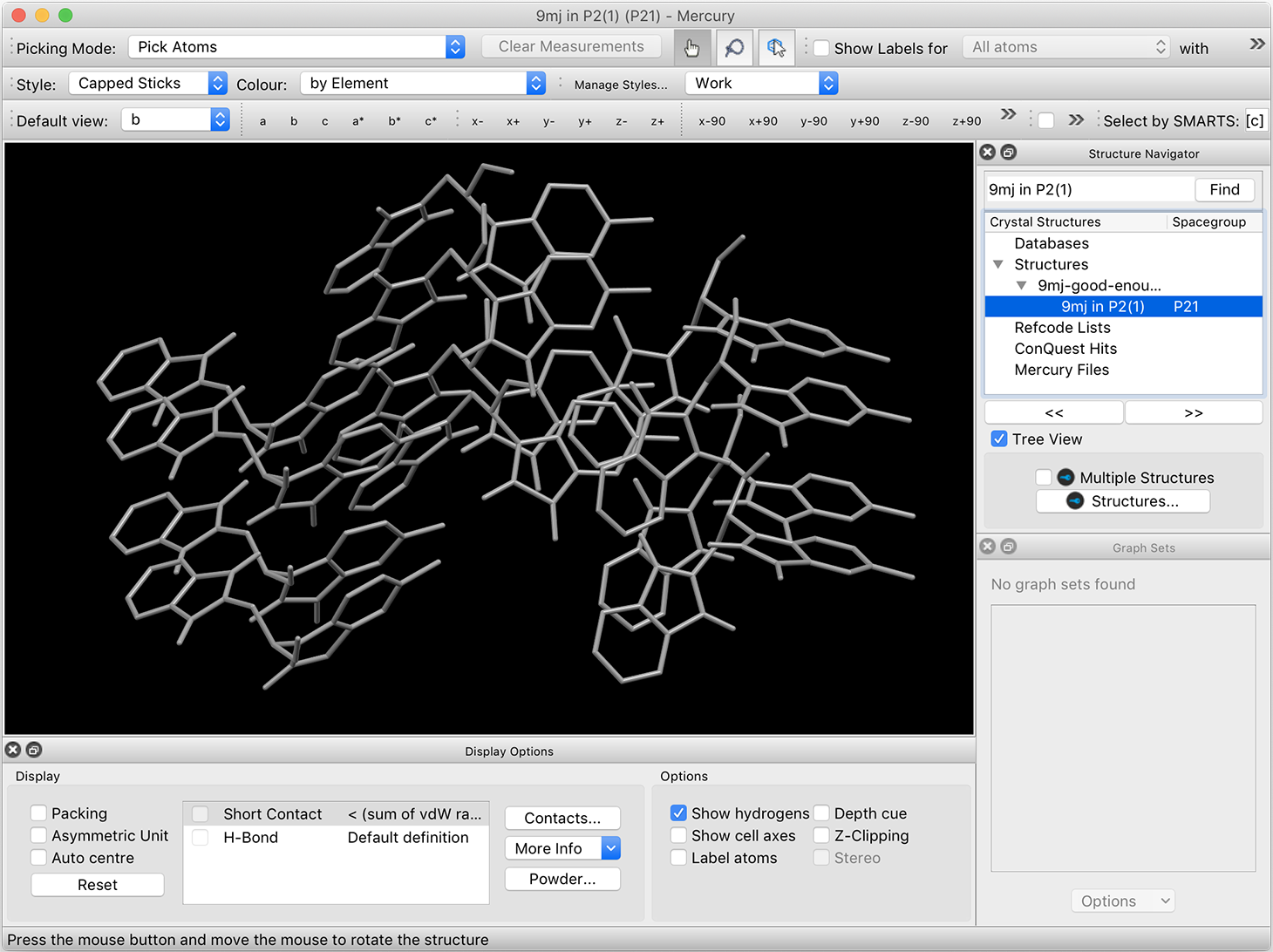
This SHELXD instructions file is downloadable using the following link:
9mj-shelxd.ins
The filename needs to be changed to 9mj.ins to work with the 9mj.hkl dataset. On running SHELXD, the following summary is written to the screen:
9mj-shelxd.ins
The filename needs to be changed to 9mj.ins to work with the 9mj.hkl dataset. On running SHELXD, the following summary is written to the screen:

From the looks of it, the structure was solved well before the 20th try. In Mercury,
it looks like this:

Aside from a few disconnected parts, this is not so bad. SHELXD has assigned a few
of the atoms as oxygen (red) and the rest as carbon (grey). It is straightforward, if a bit
tedious, to manually build this into twelve discrete molecules. To proceed, we do need a
more complete model, but it does not have to be fully refined. That's just as well, because
anisotropic refinement of this P21 model is not stable, even with an
extensive battery of constraints and restraints. Indeed, it was refinement instability that
prompted a closer look. Luckily, for its intended purpose here, an isotropic model without
hydrogen atoms will suffice. Similarly, it won't matter if some of the atom types are wrong;
it just needs to be good enough. A few cycles of model building/refinement gave the
following, in which all non-hydrogen atoms have been left as carbon:

Since this tutorial is not intended to be an exercise in laborious model building, the above
model is available for download, here:
9mj-good-enough.res
In part 4 we'll use this model to create a 'detwinned' dataset for diagnostic purposes.
9mj-good-enough.res
In part 4 we'll use this model to create a 'detwinned' dataset for diagnostic purposes.
1: Introduction
2: Set up instructions using XPREP
3: Solve using P21 with SHELXD
4: Detwin using SHELXL
5: Analyze detwinned dataset using XPREP
6: Three-fold twinning in graphic detail
7: Solve using B21 with SHELXD
2: Set up instructions using XPREP
3: Solve using P21 with SHELXD
4: Detwin using SHELXL
5: Analyze detwinned dataset using XPREP
6: Three-fold twinning in graphic detail
7: Solve using B21 with SHELXD